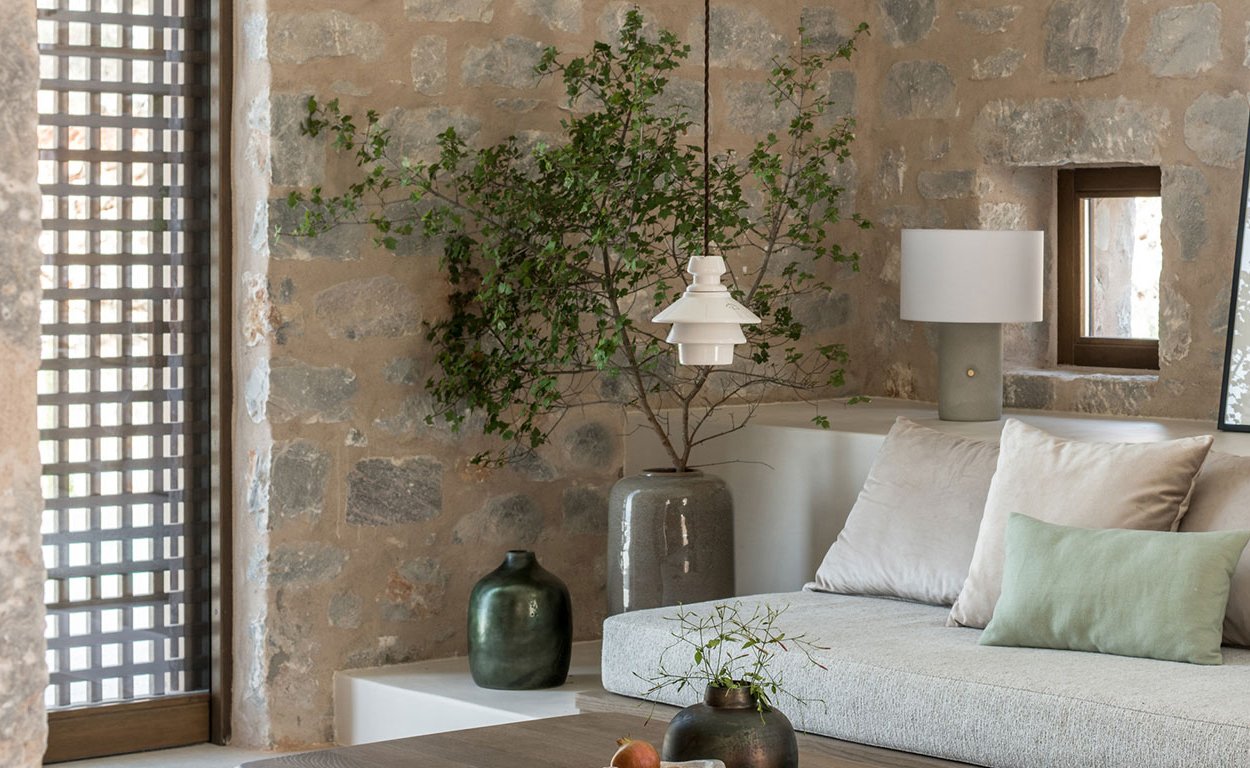
Typical Greek Interior Design is simple and sparse, featuring natural elements and an emphasis on balance and harmony. Often, this style is paired with varying shades of blue and white. The key to a successful Greek design is to use high-quality furnishings, such as hand-crafted pieces.
Traditional Greek homes often feature exposed stone walls, which provide a clean, natural look. Stone flooring is also popular. This provides a feeling of elegance and provides a refreshing feel during the hot, Grecian summers.
The color scheme of a traditional Greek home is often comprised of natural colors, such as olive, beige, and sage. These colors evoke the beauty of the sea, soil, and soft leaves. They can also evoke a sense of warmth, as in the kitchen or bath. A variety of natural fabrics are used, including linen, silk, and animal fur. These fabrics are lightweight and sheer. They also add colour to a room.
Another common feature of Greek interiors is the use of textured plaster. This material reflects light and adds a sculptural effect to a ceiling. Many modern homes also use textured plaster on their ceilings. New types of wallpaper can give the appearance of textured plaster.
Traditionally decorated homes also feature exposed brick, which can be an attractive accent wall. For a more contemporary look, consider adding interior columns. These pillars can hold plants or sculptures and can give a Mediterranean vibe to a space. They can also be used as pedestals.
Greek furniture may include carved wood chests that could be used as storage for clothing or household goods. These pieces were sometimes painted, but they typically were not intricately designed. Some of the more common designs included backless chairs, chests, and stools. In addition, wealthy Greeks often had their homes painted in Persian and Greek tapestries.
Besides furniture, Greek interiors also use a variety of plant life. The most common type of plant is palm leaves. These large, long leaves are often used in urns. They are also used as a symbol of peace and wisdom.
The most important plant in Greek interior design is the olive tree. Olives symbolize health and wisdom. A variety of natural colors can be used for a room, such as greens, yellows, and reds. These colors evoke the beauty of the ocean, soft leaves, and herb colors. Depending on the mood of the room, you can paint the walls and windows in an evocative blue, a soft yellow, or even a faded lemon yellow.
Natural colors are a must for Greek interiors. These colors evoke the sea, seashells, herbs, and soft leaves. In addition, you can choose a light sage green or a washed out sea-foam. This color is especially suited for bathrooms and kitchens. You can use the color to add a sense of warmth during the winter.
Another interior design element that can be used to incorporate Greek style into a home is a tripod table. This design features three legs that flare out at the bottom of the piece of furniture. This allows for easy balance on rough floors. These tables are also relatively inexpensive, and are a great option for incorporating Greek design into your home.

Immerse yourself in architecture’s most boundary-pushing ideas—where innovative home improvements meet visionary urban developments. Discover new building techniques, materials, and creative concepts that are redefining how we shape our spaces on a global scale.